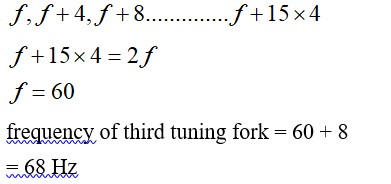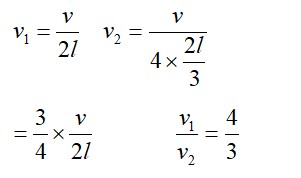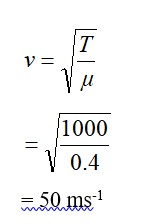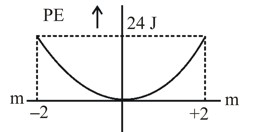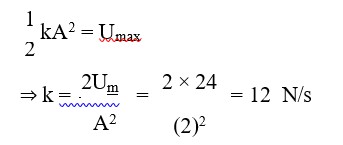For the harmonic travelling wave y = 2 cos 2π (10t–0.0080x + 3.5) where x and y are in cm and t is second. What is the phase difference between the oscillatory motion at two points separated by a distance of
(a) 4 m
(b) 0.5 m
(c) 2 λ
(d) 3 4 λ (at a given instant of time)
(e) What is the phase difference between the oscillation of a particle located at x = 100cm, at t = T s and t = 5 s
For the harmonic travelling wave y = 2 cos 2π (10t–0.0080x + 3.5) where x and y are in cm and t is second. What is the phase difference between the oscillatory motion at two points separated by a distance of
(a) 4 m
(b) 0.5 m
(c) 2 λ
(d) 3 4 λ (at a given instant of time)
(e) What is the phase difference between the oscillation of a particle located at x = 100cm, at t = T s and t = 5 s
-
1 Answer
-
This is a long answer type question as classified in NCERT Exemplar
Wave functions y= 2cos2 (10t-0.0080x + 3.5)
= 2cos(20 )
Now standard equation of travelling wave can be written as
Y= a cos (wt-kx+ )
So by comparing with above equation
a= 2cm
w=20
k=0.016
path difference =4cm
(a) phase difference path difference
(e) T= /w=2 /20
At x=100cm
t=T
=20
= 20
Again at x=100cm t=5s
=20
=100
From above two equation phase difference
=(100 )-
= 100
Similar Questions for you
The acceleration of wave is g/2. Its speed increases as it moves up. So answer is (2)
Taking an Exam? Selecting a College?
Get authentic answers from experts, students and alumni that you won't find anywhere else
Sign Up on ShikshaOn Shiksha, get access to
- 65k Colleges
- 1.2k Exams
- 678k Reviews
- 1800k Answers

